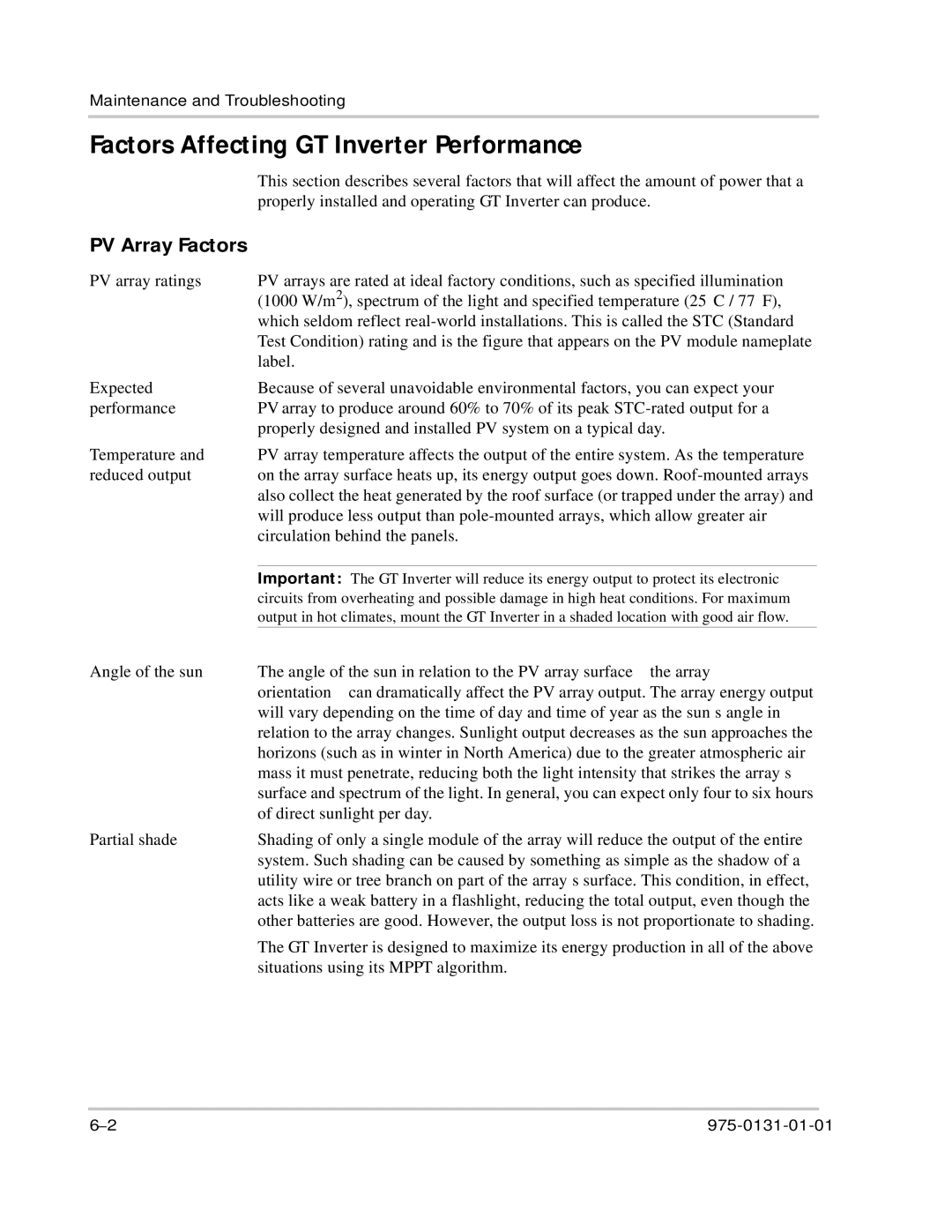
Maintenance and Troubleshooting
Factors Affecting GT Inverter Performance
| This section describes several factors that will affect the amount of power that a |
| properly installed and operating GT Inverter can produce. |
PV Array Factors |
|
PV array ratings | PV arrays are rated at ideal factory conditions, such as specified illumination |
| (1000 W/m2), spectrum of the light and specified temperature (25°C / 77°F), |
| which seldom reflect |
| Test Condition) rating and is the figure that appears on the PV module nameplate |
| label. |
Expected | Because of several unavoidable environmental factors, you can expect your |
performance | PV array to produce around 60% to 70% of its peak |
| properly designed and installed PV system on a typical day. |
Temperature and | PV array temperature affects the output of the entire system. As the temperature |
reduced output | on the array surface heats up, its energy output goes down. |
| also collect the heat generated by the roof surface (or trapped under the array) and |
| will produce less output than |
| circulation behind the panels. |
|
|
| Important: The GT Inverter will reduce its energy output to protect its electronic |
| circuits from overheating and possible damage in high heat conditions. For maximum |
| output in hot climates, mount the GT Inverter in a shaded location with good air flow. |
Angle of the sun | The angle of the sun in relation to the PV array |
| |
| will vary depending on the time of day and time of year as the sun’s angle in |
| relation to the array changes. Sunlight output decreases as the sun approaches the |
| horizons (such as in winter in North America) due to the greater atmospheric air |
| mass it must penetrate, reducing both the light intensity that strikes the array’s |
| surface and spectrum of the light. In general, you can expect only four to six hours |
| of direct sunlight per day. |
Partial shade | Shading of only a single module of the array will reduce the output of the entire |
| system. Such shading can be caused by something as simple as the shadow of a |
| utility wire or tree branch on part of the array’s surface. This condition, in effect, |
| acts like a weak battery in a flashlight, reducing the total output, even though the |
| other batteries are good. However, the output loss is not proportionate to shading. |
| The GT Inverter is designed to maximize its energy production in all of the above |
| situations using its MPPT algorithm. |
